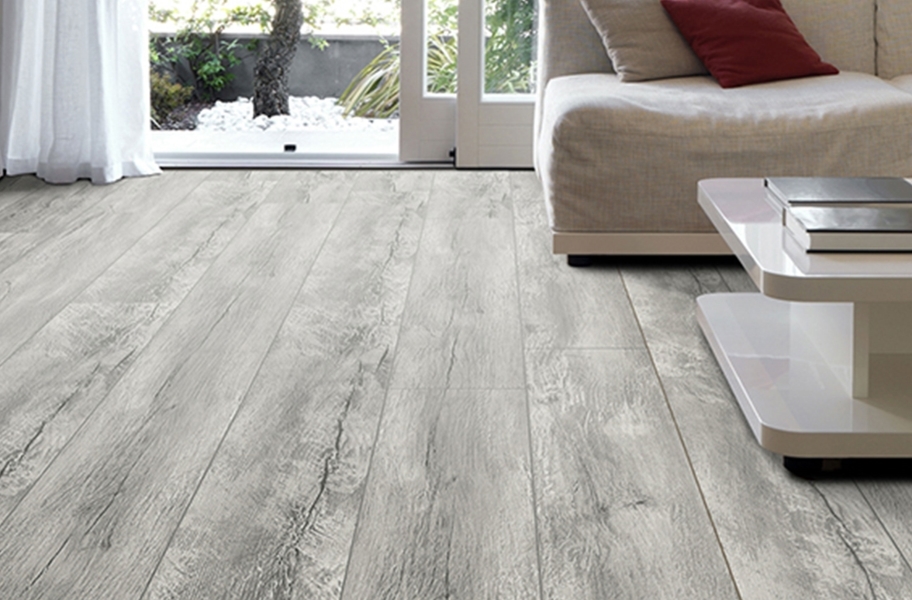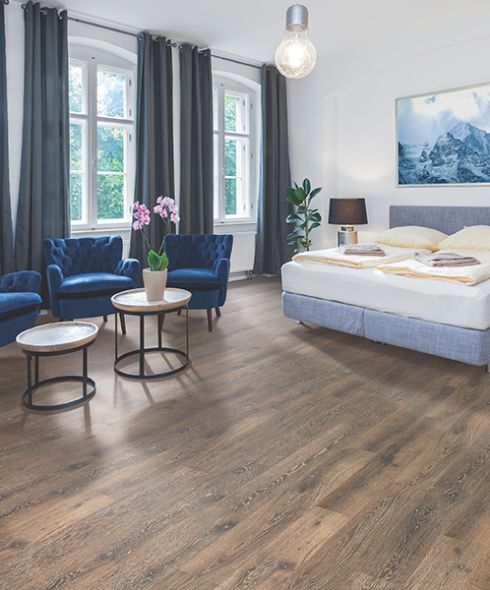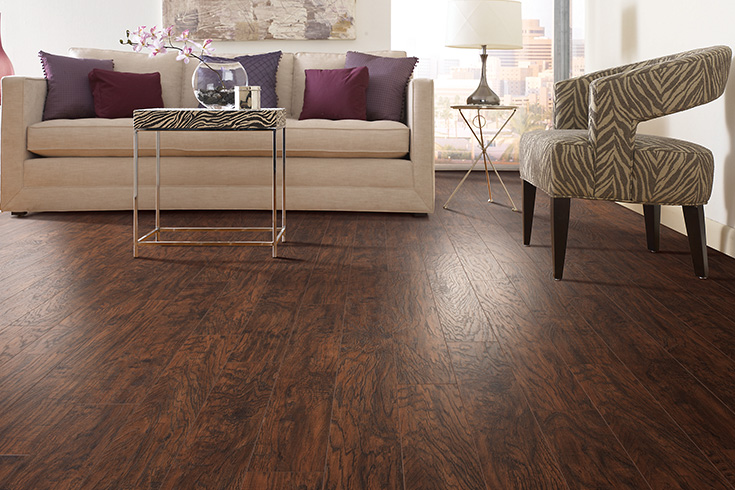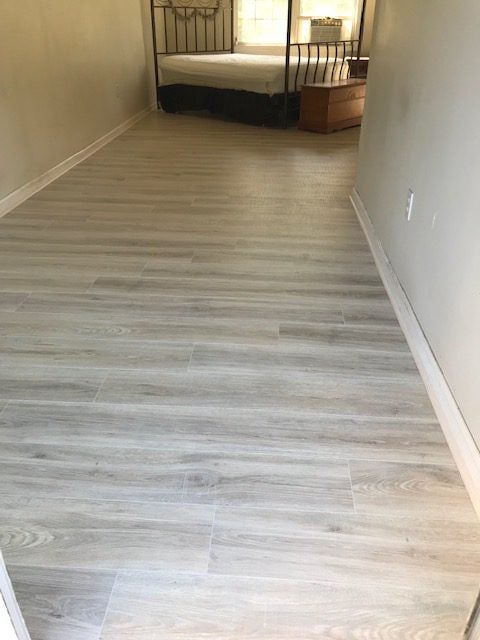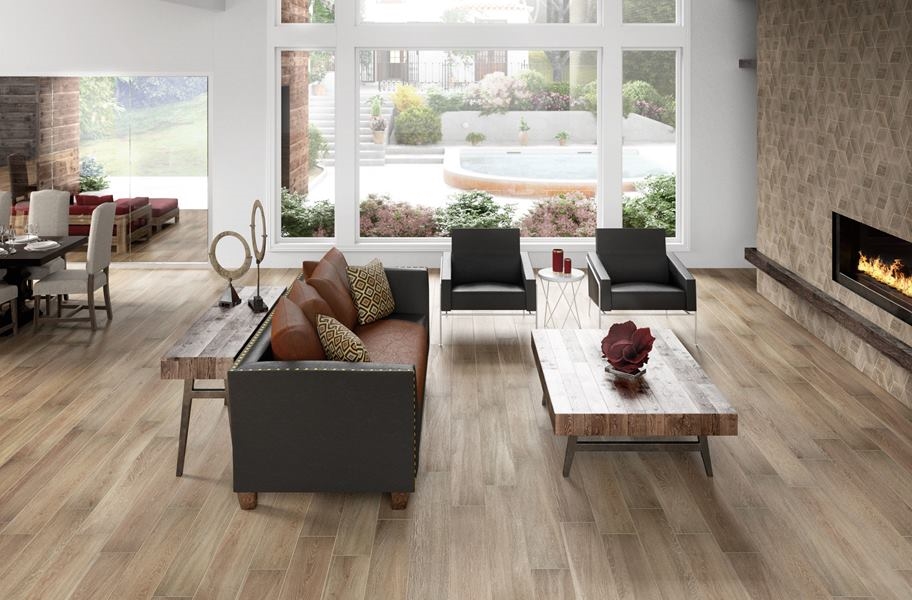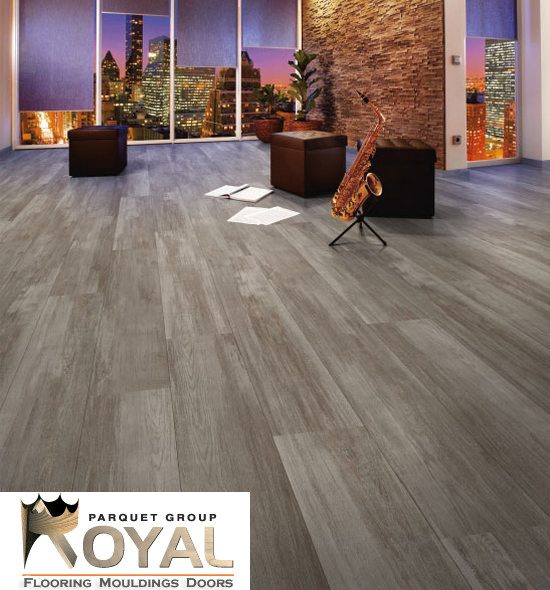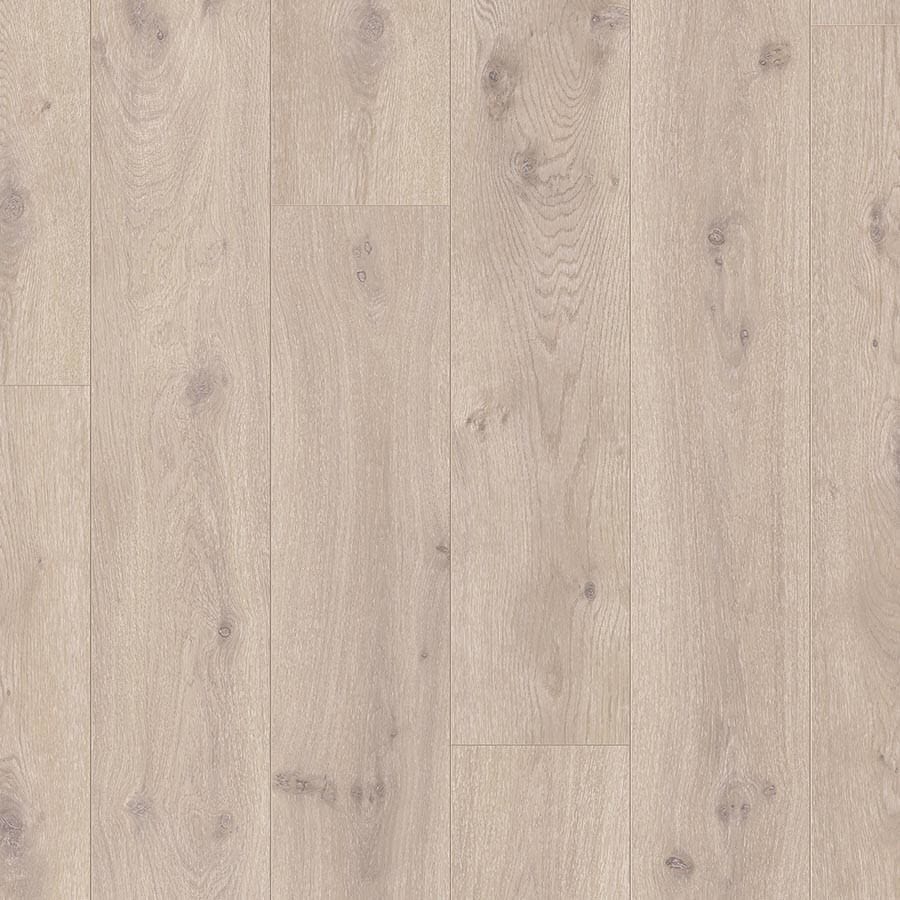The Rise of Laminate Flooring in Modern Homes
Laminate flooring has transformed the modern home, offering a stylish and practical alternative to traditional flooring options. Over the years, it has become a go-to choice for many homeowners, thanks to its affordability, durability, and evolving design options. From its early beginnings to its current widespread appeal, laminate flooring has carved out a significant place in contemporary interior design. Let’s dive into why laminate flooring has seen such a rise in modern homes.
- Affordable Alternative to Hardwood One of the most appealing aspects of laminate flooring is its affordability. Homeowners who want the look of real hardwood often turn to laminate because it mimics the aesthetic of wood without the high cost. I’ve seen many homes transform with a laminate that provides the warmth and beauty of wood at a fraction of the price. This cost-effectiveness has made laminate accessible to a wider range of people, from first-time homeowners to those renovating on a budget.
- Ease of Installation Laminate flooring is easy to install, especially for DIY enthusiasts. Many laminate options feature a click-and-lock system that allows you to lay down the flooring without the need for nails, glue, or special tools. When I was updating my own space, I could install laminate on a weekend, making it an attractive choice compared to more labor-intensive flooring types. This DIY-friendliness has contributed to its growing popularity in modern homes.
- Durability and Low Maintenance Laminate flooring’s resilience is another reason for its popularity. Unlike traditional hardwood, which can scratch and dent easily, laminate is designed to resist wear and tear. I’ve found it to be especially beneficial in high-traffic areas like kitchens and living rooms. Plus, it’s much easier to maintain—no need for regular sanding or refinishing like hardwood floors require. A quick sweep or mop is all you need to keep it looking fresh.
- Wide Range of Styles and Designs Gone are the days when laminate flooring came in just a few basic styles. Today’s laminate offers a vast array of colors, textures, and finishes. Whether you’re going for a rustic farmhouse look or a sleek, modern design, there’s a laminate option to match your vision. I love how versatile laminate has become, allowing homeowners to experiment with different looks without sacrificing quality or aesthetics.
- Eco-Friendly Options As sustainability becomes more important to homeowners, laminate flooring manufacturers have responded by creating eco-friendly options. Many laminate floors are made from recycled materials and are designed to be more sustainable than traditional wood flooring. This is one of the reasons I chose laminate for my home—it allowed me to create a beautiful space while also being mindful of the environment.
- Improved Technology for Realistic Textures Advances in printing technology have made laminate flooring more realistic than ever. The top layer of laminate is a high-resolution image of wood or stone, giving it a convincing appearance. I was surprised at how real the texture and grain of the laminate looked in my space. The technology has progressed to a point where it’s sometimes hard to distinguish between laminate and real hardwood at first glance.
- Resistant to Moisture and Stains Modern laminate flooring is much more resistant to moisture and stains than its earlier counterparts. This makes it an excellent choice for kitchens, bathrooms, and basements—places where hardwood isn’t typically recommended. I’ve personally appreciated how well my laminate flooring holds up in rooms where spills are more common. This water-resistant feature gives it an edge in modern homes that need both style and practicality.

Durability and Versatility: Key Features of Modern Laminate Flooring
Laminate flooring has a well-earned reputation for durability and versatility. Homeowners love it not only for its looks but also for how well it stands up to the daily rigors of a busy household. Whether you’re concerned about foot traffic, pets, or moisture, laminate flooring is built to last in almost any setting. Here’s why I consider durability and versatility as laminate’s key features.
Scratch and Dent Resistance One of the top reasons laminate flooring has become a modern home favorite is its resistance to scratches and dents. Unlike traditional hardwood, which can easily show signs of wear, laminate’s tough top layer protects it from damage. I’ve found this especially important in homes with pets or children, where floors tend to take more of a beating. The ability to stand up to heavy use without losing its beauty is a huge advantage.
Suitable for High-Traffic Areas Laminate flooring’s durability makes it perfect for high-traffic areas such as entryways, hallways, and living rooms. When I installed laminate in my living space, I was impressed with how well it held up to constant foot traffic. Whether it’s daily use or hosting large gatherings, laminate flooring doesn’t easily wear down, making it a reliable choice for busy households.
Moisture-Resistant Options While older laminate flooring wasn’t the best for moisture-prone areas, modern advancements have led to more water-resistant varieties. I’ve seen how today’s laminate can withstand moisture, making it suitable for kitchens and even bathrooms. This versatility allows you to have a consistent flooring style throughout your home, without worrying about water damage in sensitive areas.
Compatibility with Radiant Heating Systems Another feature that adds to laminate’s versatility is its compatibility with radiant heating systems. I love how this works for homes in colder climates where heating is a must. Many laminate products are designed to work well with underfloor heating, providing a warm and comfortable surface to walk on. This compatibility broadens the scope of where laminate can be used, from living rooms to bedrooms and beyond.
Variety of Styles to Fit Any Aesthetic The versatility of laminate flooring extends to its range of designs. Whether your home has a modern, rustic, or traditional aesthetic, there’s a laminate style to match. I was amazed by the sheer number of choices available when I was flooring my home. You can find options that mimic not only wood but also stone, tile, and other materials, making it adaptable to various design preferences.
Easy to Replace Damaged Sections One of the best aspects of laminate flooring’s versatility is how easy it is to replace damaged sections. If one plank gets scratched or damaged, you can simply replace that piece without tearing up the entire floor. I’ve found this to be incredibly convenient, especially in high-traffic areas where damage is more likely to occur. It’s a cost-effective way to maintain the look of your floor without needing major repairs.
Innovative Designs and Textures for Contemporary Spaces
One of the most exciting developments in modern laminate flooring is the explosion of innovative designs and textures. Gone are the days of plain, uninspired laminate. Today’s options can mimic the appearance of wood, stone, and even ceramic tiles, offering homeowners endless possibilities for styling their spaces. I’ve been amazed by the range of choices available, which make laminate flooring a perfect fit for contemporary homes looking to achieve a specific aesthetic without the high price tag.
Realistic Wood-Look Finishes One of the most popular designs in laminate flooring is the wood-look finish, which has been perfected over time. High-definition printing technology has allowed manufacturers to create laminates that look virtually indistinguishable from real wood. I’ve seen installations where the laminate flooring features realistic grain patterns and textures that closely resemble oak, maple, or walnut. It’s perfect for those who want the warmth of wood without the upkeep.
Stone and Tile Imitations Another trend in laminate flooring is designs that mimic natural stone and ceramic tiles. These styles bring an elegant touch to modern homes, providing the look of luxury materials at a more affordable price. I’ve always admired how laminate can achieve the visual effect of marble or slate without the heaviness or the need for professional installation. It’s a great option for kitchens, bathrooms, or even entryways where you want a sleek, polished look.
Wide Planks and Narrow Strips Today’s laminate flooring also offers variety in plank width, from wide, rustic boards to narrow, sleek strips. Wide planks can give a room a more open and expansive feel, which is perfect for creating a modern, airy atmosphere. On the other hand, narrow strips provide a more traditional look that can be equally stylish in contemporary settings. I’ve found that playing with plank width allows for creative expression, helping homeowners design spaces that feel unique.
Textured Surfaces for Added Realism In addition to its realistic appearance, laminate flooring now offers textured surfaces that feel like the real thing. Embossed and hand-scraped finishes give the flooring an authentic, tactile feel, enhancing the illusion of real wood or stone. I’ve been particularly impressed with how these textures add depth to a room, making the laminate not only look but also feel like natural materials.
Color Variations and Customization Laminate flooring today comes in a broad spectrum of colors, from light ash tones to deep, rich mahoganies. This variety makes it easy to find a floor that complements any décor style, whether you’re going for a minimalist Scandinavian look or a bold, dramatic statement. I love how modern laminate allows you to experiment with different hues to match your interior vision without worrying about staining or fading over time.
Patterns and Layout Options Beyond the materials and textures, the way laminate flooring is laid out can drastically change the look of a room. Patterns like herringbone, chevron, or diagonal planks add a dynamic, contemporary feel to any space. I’ve found that these patterned layouts can turn a simple floor into a statement feature, giving your home a truly unique touch. The versatility of laminate flooring makes it easy to achieve these intricate designs without the complexity or cost of natural materials.
Laminate Flooring vs. Hardwood: A Modern Comparison
When choosing flooring for a modern home, laminate and hardwood often come up as two of the top contenders. Both have their pros and cons, but the decision ultimately depends on the specific needs and preferences of the homeowner. Having lived with both options, I’ve noticed distinct differences between laminate and hardwood that are worth considering before making a final choice. Here’s a breakdown of how these two flooring types stack up.
Cost Comparison The first and most obvious difference between laminate and hardwood is cost. Laminate flooring is much more affordable, making it an attractive option for those on a budget. Hardwood, while beautiful and long-lasting, can be significantly more expensive. I remember when I was deciding between the two for my home, and the price of hardwood was nearly double that of laminate. For large spaces or entire home renovations, laminate can save you thousands of dollars.
Durability and Wear While hardwood is known for its durability, it is more prone to scratches, dents, and water damage. Laminate, on the other hand, is engineered to resist wear and tear, making it a better choice for high-traffic areas or homes with pets and kids. In my experience, hardwood floors can show signs of wear more quickly, while laminate maintains its appearance for longer periods, especially in busy areas like hallways and kitchens.
Maintenance Needs Hardwood floors require regular maintenance, including refinishing, polishing, and careful cleaning to avoid water damage. Laminate flooring, by contrast, is much easier to care for. I’ve found that laminate requires only basic sweeping and occasional mopping, without the need for special treatments. For busy homeowners or those who prefer low-maintenance solutions, laminate is often the better option.
Longevity and Resale Value Hardwood flooring can last for decades with proper care and can even add to the resale value of a home. Laminate doesn’t have the same lifespan—usually 15 to 25 years depending on the quality—but it’s more resistant to daily wear and tear in that time frame. From a resale perspective, hardwood is typically more desirable to buyers, but I’ve seen modern laminate installations that are just as appealing, especially when budgets are tight.
Aesthetic and Feel There’s no denying that hardwood has a natural warmth and elegance that laminate can’t completely replicate. The real grain and texture of wood give it an unmatched authenticity. That said, laminate has come incredibly close to mimicking this look. In some of the newer laminate designs I’ve encountered, the difference is barely noticeable, making it a great choice for those who want a high-end look without the high-end price.
Environmental Impact When it comes to sustainability, both options can be eco-friendly, but it depends on the source. Many hardwood floors are harvested from sustainable forests, while laminate is often made from recycled materials. I’ve found that laminate is often considered the more eco-conscious choice due to its manufacturing process and use of fewer natural resources. However, sustainably sourced hardwood remains a timeless, environmentally responsible option.
Eco-Friendly and Sustainable Laminate Flooring Options
As environmental awareness grows, so does the demand for eco-friendly flooring options. Laminate flooring has made significant strides in sustainability, with many manufacturers now offering greener products made from recycled materials. I’ve always felt that choosing sustainable options for my home is important, and it’s great to see how laminate flooring has evolved to meet this need. Let’s take a closer look at what makes modern laminate flooring eco-friendly.
Made from Recycled Materials Many modern laminate floors are made from recycled wood fibers and other materials, which reduces the demand for virgin resources. I’ve been impressed by how these recycled products still maintain the look and feel of traditional materials. By opting for laminate made from recycled content, homeowners can reduce their environmental footprint without sacrificing style or quality.
Sustainable Manufacturing Practices Many laminate flooring manufacturers are committed to sustainable practices, such as using less water and energy in production. Some companies even source their wood from responsibly managed forests. I always look for products that are certified by organizations like the Forest Stewardship Council (FSC), which ensures that the wood used comes from sustainable sources. This makes it easier to choose the flooring that aligns with my environmental values.
Low VOC Emissions Another reason laminate is considered eco-friendly is its low volatile organic compound (VOC) emissions. Older flooring materials often release harmful chemicals into the air, but today’s laminate is designed to be low-VOC, making it safer for indoor air quality. I’ve found this to be particularly important for homes with children, pets, or those sensitive to chemicals. It’s a great way to ensure your flooring choice is both sustainable and healthy.
Long Lifespan Reduces Waste While laminate doesn’t last as long as hardwood, its durability means fewer replacements over time. This longevity reduces waste, as fewer floors are sent to landfills. I appreciate that modern laminate floors are designed to last for years, even in high-traffic areas. This reduces the need for frequent replacements, making it a more sustainable choice in the long run.
Recyclable at the End of Life Many laminate floors are also recyclable at the end of their life cycle. Once the flooring is removed, it can often be repurposed or broken down into materials for new products. I’ve seen that some manufacturers even offer recycling programs for their flooring, ensuring that old laminate doesn’t end up in landfills. This makes laminate an appealing choice for environmentally conscious homeowners like myself.
Certified Green Products When shopping for laminate flooring, I always look for certifications that verify its eco-friendliness. Products with labels like GREENGUARD or FloorScore indicate that the flooring meets strict environmental standards. I’ve found that these certifications make it easier to identify which laminate options are truly sustainable, giving me peace of mind that I’m making a responsible choice for both my home and the planet.
Installation Made Easy: Why DIY Enthusiasts Love Laminate
Laminate flooring has become a favorite among DIY enthusiasts for one major reason: it’s incredibly easy to install. With advancements in locking systems and lighter materials, homeowners can now install their flooring with minimal effort and tools. I’ve taken on a few flooring projects myself, and I can confidently say that laminate is one of the simplest and most rewarding home improvements. Here’s why DIYers love laminate.
Click-and-Lock Installation System The biggest reason laminate flooring is so DIY-friendly is the click-and-lock system that most products now feature. Instead of using nails, glue, or staples, you simply snap the planks together. I’ve found this system to be intuitive and forgiving, even for first-timers. With just a little patience and attention to detail, you can achieve professional-looking results without hiring a contractor.
No Need for Special Tools Another great thing about laminate flooring is that it doesn’t require specialized tools for installation. All you need is a saw to cut the planks, a tape measure, and a rubber mallet to ensure the planks fit snugly together. I’ve been able to complete installations with just these basic tools, making it a cost-effective project that doesn’t require expensive equipment.
Floating Floor Design Most laminate flooring is installed as a floating floor, which means it’s not glued or nailed down to the subfloor. This makes installation quicker and easier since you don’t need to worry about adhesives or fasteners. I’ve appreciated how simple it is to lay down laminate over existing flooring or subfloors, making it an ideal choice for quick renovations or room makeovers.
Easy to Replace Damaged Planks One of the biggest challenges with traditional flooring is repairing damage. However, with laminate, if a plank gets damaged, it’s relatively easy to replace. I’ve found that you can just remove the affected plank and snap in a new one, without disturbing the rest of the floor. This makes laminate a low-maintenance option that’s forgiving if you encounter minor mishaps down the line.
Minimal Prep Work Required Unlike some flooring types that require extensive subfloor preparation, laminate can be installed over a variety of surfaces with minimal prep. Whether it’s concrete, plywood, or even old vinyl flooring, laminate usually requires little more than a clean, level surface. I’ve been able to skip a lot of the tedious prep work with laminate, making the installation process quicker and less complicated.
Quick and Satisfying Results Perhaps the most satisfying part of installing laminate flooring is how quickly you can see results. I’ve been amazed at how much a room can be transformed in just a day or two of work. Since laminate is pre-finished, there’s no need to sand, stain, or seal the floor, so you can start enjoying your new space as soon as the last plank is clicked into place. For DIY enthusiasts, the instant gratification of a completed laminate floor is hard to beat.
Caring for Modern Laminate Flooring: Maintenance Tips and Tricks
One of the biggest perks of modern laminate flooring is how easy it is to care for compared to other flooring types. Whether you have a busy household with pets and kids or just want a low-maintenance option that still looks great, laminate flooring is designed with convenience in mind. Over the years, I’ve learned some key tips and tricks to keep laminate floors looking their best, and I’m excited to share them with you.
Daily Cleaning: Sweep and Vacuum Regularly The first step to maintaining laminate flooring is regular cleaning. Dust and dirt can accumulate quickly, especially in high-traffic areas, so it’s important to sweep or vacuum frequently. I prefer using a soft-bristle broom or a vacuum with a hard floor attachment to avoid scratching the surface. Since laminate flooring doesn’t trap dirt like carpets do, a quick sweep every day or two is all you need to keep things looking tidy.
Avoid Excess Water While laminate flooring is more resistant to moisture than hardwood, it’s still important to avoid excess water. Too much moisture can seep into the seams and cause the planks to warp or swell over time. I’ve always made sure to use a damp mop, not a soaking wet one, when cleaning laminate floors. In fact, I find that a microfiber mop works best because it uses minimal water and dries quickly, reducing the risk of water damage.
Use the Right Cleaning Products When it comes to cleaning laminate flooring, it’s crucial to avoid harsh chemicals. Ammonia-based or abrasive cleaners can dull the finish and even damage the protective layer of the flooring. I’ve found that a mixture of water and a few drops of mild dish soap works wonders for most spills and stains. For tougher grime, I prefer laminate-specific cleaning products that are gentle on the surface. Always check the manufacturer’s recommendations to ensure you’re using the right products for your floor.
Protect Your Floors from Furniture Scratches One of the easiest ways to extend the life of laminate flooring is by protecting it from furniture scratches. I’ve learned the hard way that dragging heavy furniture across laminate can cause unsightly marks. To prevent this, I use felt pads under the legs of chairs, tables, and sofas. For larger pieces, like bookcases or cabinets, I recommend using furniture sliders when moving them around. These small precautions make a big difference in keeping the floor looking pristine.
Quick Cleanup for Spills and Stains Accidents happen, especially in busy households, but quick cleanup is key to preventing permanent damage to laminate floors. I always keep a soft cloth or paper towels handy to wipe up spills as soon as they occur. Laminate is resistant to stains, but if liquid sits on the surface too long, it can seep into the seams. For tougher spots like food or grease, a bit of diluted dish soap usually does the trick without damaging the finish.
Addressing Scratches and Scuffs Despite your best efforts, scratches and scuffs can sometimes appear on laminate flooring, especially in high-traffic areas. The good news is that minor scratches can often be buffed out with a laminate repair kit. I’ve used these kits before, and they typically come with colored putty or wax that matches the floor, making it easy to fill in scratches. For deeper gouges, you might need to replace the affected plank, but since laminate uses a click-and-lock system, replacing individual planks is relatively simple and doesn’t require a full floor replacement.
Modern Flooring Ideas: 11 Options for Contemporary Homes
ideas for laminate – Unlimited variety of design for modern
Laminate Flooring Portfolio – Modern – Living Room – Los Angeles
Pergo Portfolio Modern Oak 8.07-in W x 6.72-ft L Embossed Wood
Related Posts:
- White Laminate Flooring In Living Room
- Grey Vintage Oak Laminate Flooring
- Dark Laminate Flooring Living Room
- Cheap Walnut Laminate Flooring
- Designer Choice Laminate Flooring
- Laminate Flooring Around Stairs
- Laminate Flooring Brick Pattern
- Black Gray Laminate Flooring
- Satin Walnut Laminate Flooring
- Laminate Floor Leveling
